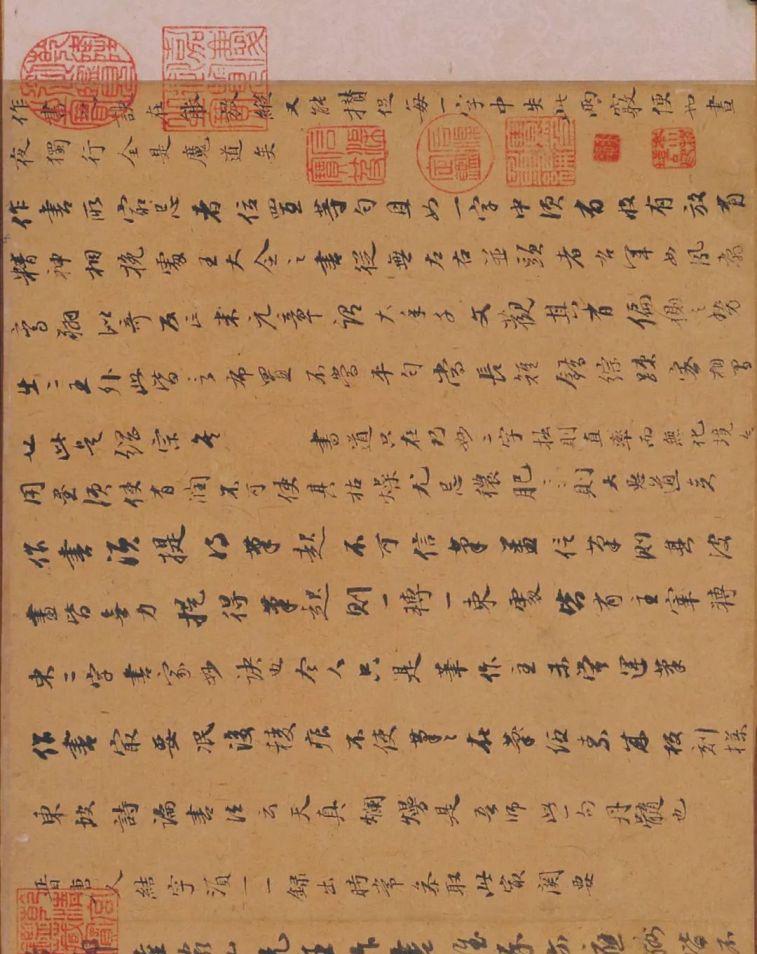Dong Qichang's calligraphy achievements are also very high, with the highest attainment in cursive writing, and he is also quite conceited about his own calligraphy, especially Xiao Kai. Although Dong Qichang was in the era of Zhao Mengfu and Wen Zhengming's popular calligraphy, his calligraphy was not blindly influenced by these two calligraphy masters.
His calligraphy synthesizes the calligraphy styles of the Jin, Tang, Song and Yuan dynasties, and is self-contained, with his calligraphy style flowing and ethereal, and the style is self-sufficient. The brush stroke garden is beautiful and elegant, plain and simple. With the pen fine, always maintain the positive edge, there are few pens, clumsy pens; in the chapter law, between words and words, lines and lines, branch layout, sparse and symmetrical, and strive to chase the ancient law. The use of ink is also very exquisite, dry and wet, thick and light, and it is wonderful.
Calligraphy to Dong Qichang, can be said to be the collection of ancient law, "six bodies" and "eight laws" under his hands are all-powerful, at that time has been "famous in foreign countries, rulers are short, circulating in the world, competing for treasures." (Biography of Ming Shi Wenyuan). Until the middle of the Qing Dynasty, Kangxi and Qianlong used Dong's book as the patriarchal law, and they highly respected and favored it, and even copied Dong's book in person, often listed on the right side of the seat, and watched it in the morning and evening.
Ming Dynasty Dong Qichang's "Book of Writings" volume, on paper, 28cm in length and 190cm in width. Collection of the Palace Museum. The content of this volume is a number of passages of Dong Qichang's treatise, all of which can be found in the "Painting Zen Room Essay".
According to Dong's own writings, the book was written in the nineteenth year of the Ming Dynasty (1591) as a work of its middle age, and the pen was quite clumsy and primitive. Because it is written randomly, the size of the characters and the dense spacing of the lines are not very exquisite, but at the same time, they exude a natural and simple, unrestrained charm.
At the end of the volume, Dong Qichang re-saw the writing of this volume 20 years later, that is, in the thirty-ninth year of the Wanli Calendar (1611), and recorded the before and after he wrote this volume. His writings are quite similar to Cai Xiang's style. Compared with the calligraphy of the content of the book written earlier, Dong's self-propelled pen and ink is more natural, and his personal style is more distinct, reflecting the maturity of the art of calligraphy at that time.
Dong Qichang's "Book of Writings" volume appreciation
▼

Its Changba:
Xin Yu yu asked for the funeral of the Taoist master Tian Gongzhi, and when the Han Guanshi had made a korean envoy, there was a volume of Goryeo Yellow Notes to give Yu Xing. The spring is still facing, and the paper has been decorated. There are many leisures in the boat, and I pick up the pen at will, most of them talk about the calligraphy and painting method, and I don't know it. Slaves and sons have been dismantled into horizontal scrolls, floating in the world, and for twenty years. Today, picking up old books, Ku friend Wu Tai Bachelor is in contrast, such as seeing gu wuer. When the time is spontaneous, it is quite similar to the Book of Cai Junmo, and Yu has not tried to learn the Book of Cai, and occasionally meets the ear. This paper also has a pastel copy, but it is also scattered. Gengchen September 7, Xin'an JiangZhou sub-book. Dong Qichang.